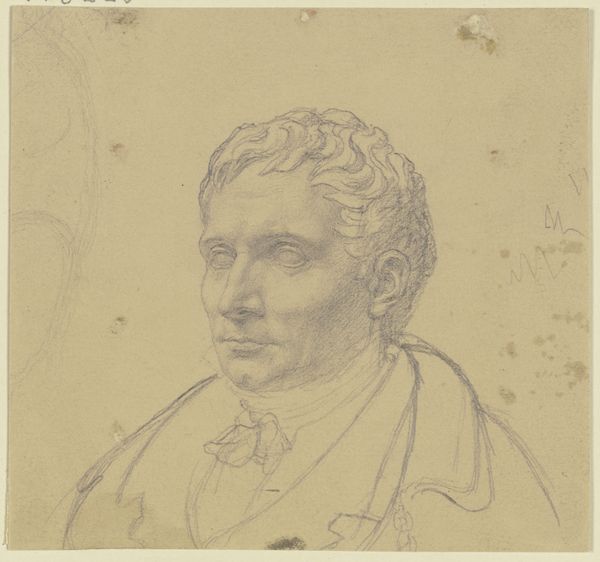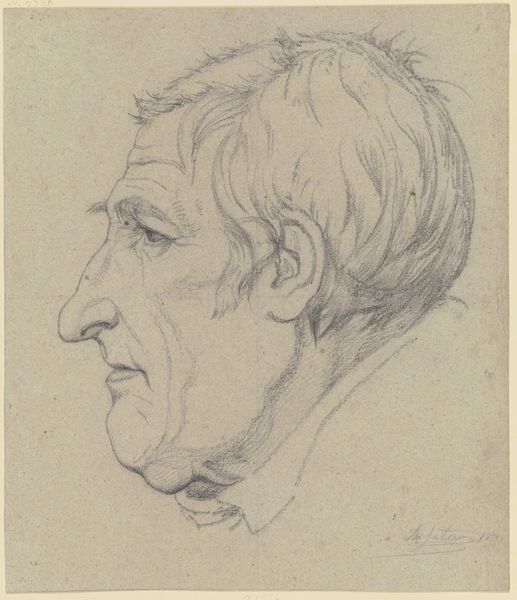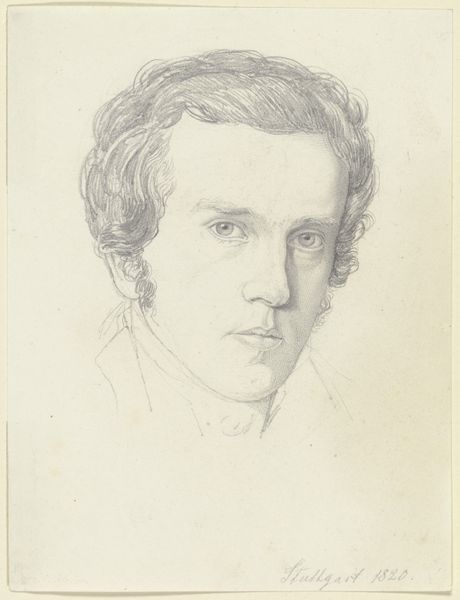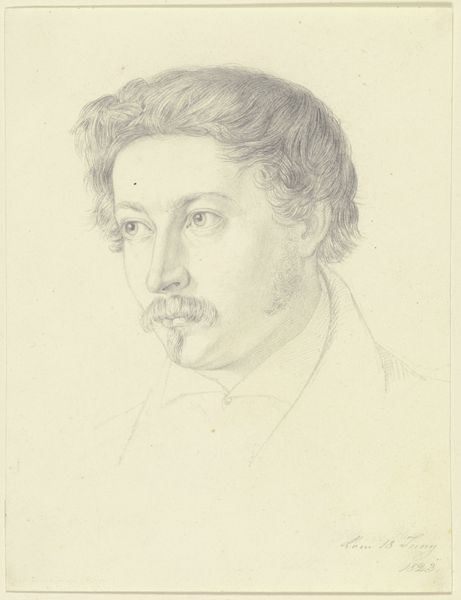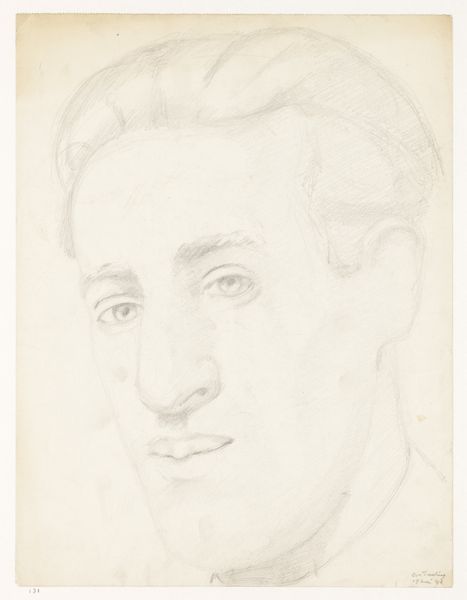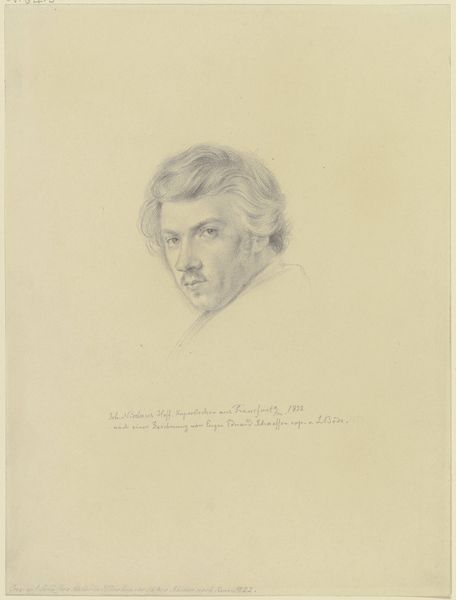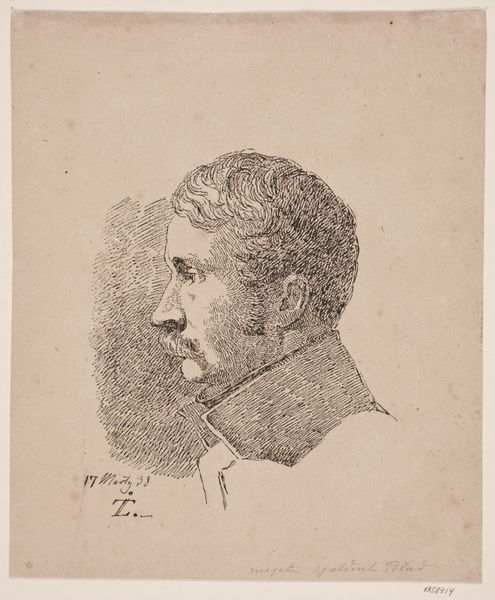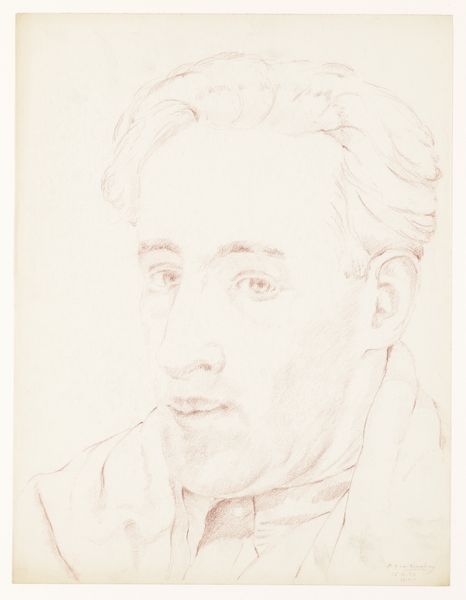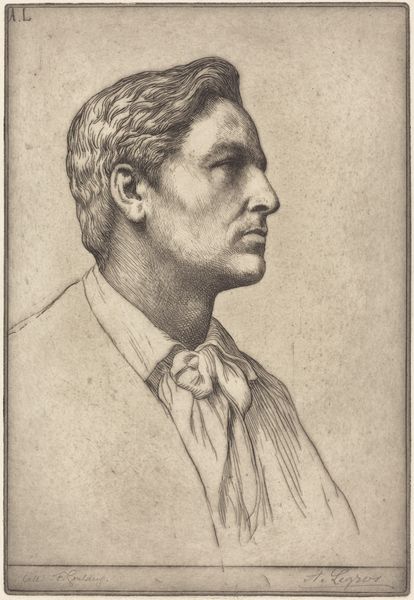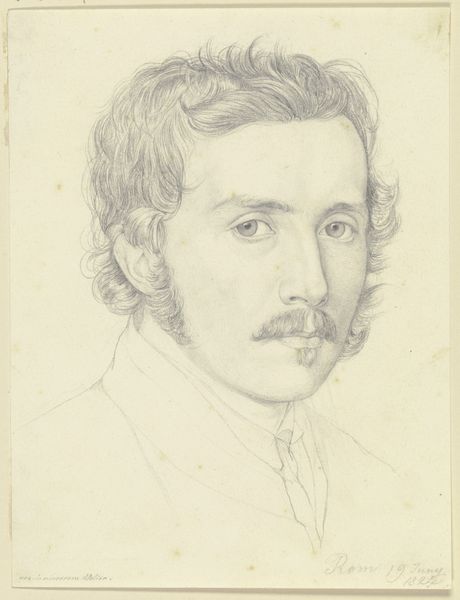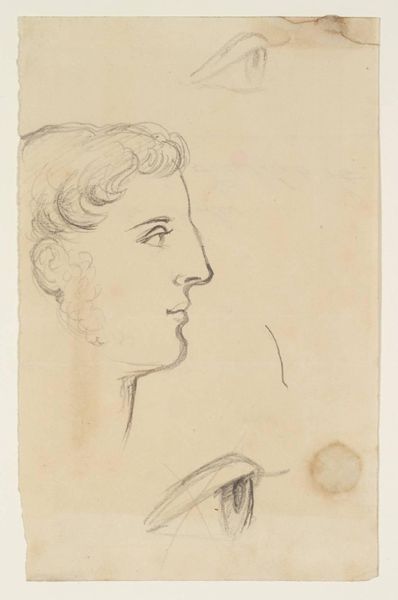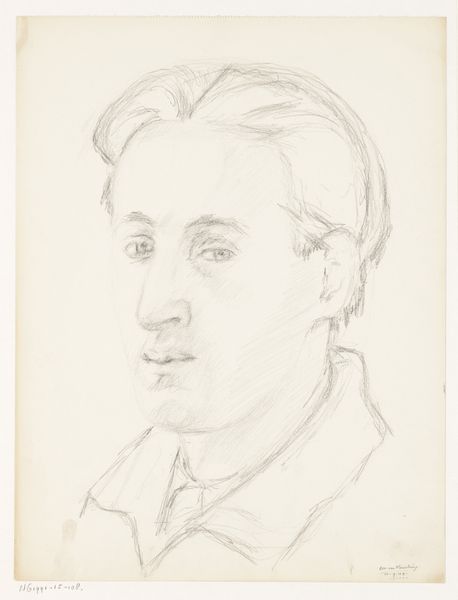
drawing, paper, pencil
#
portrait
#
drawing
#
paper
#
pencil
#
realism
Copyright: Public Domain
Curator: Here we have "Bildnis des K\u00fcnstlers Louis Eysen," a portrait of the artist Louis Eysen by Georg Christian Wecker. It is a pencil drawing on paper and can be found here at the St\u00e4del Museum. Editor: The delicacy is striking, isn’t it? There’s an almost ethereal quality to the lightness of the lines. It evokes a feeling of wistful contemplation. Curator: Absolutely. The drawing captures Eysen in profile, and you can see the care Wecker took in rendering his subject's likeness using a readily accessible medium, simply paper and pencil. It makes you wonder about the socio-economic realities influencing artistic production during the time. Were readily available materials a factor for Wecker in choosing to work on paper using only pencil? Editor: Indeed, thinking about access and resources broadens our understanding. I also notice the romantic, almost Byronic, presentation of Eysen himself. The portrait embodies a certain type of idealised masculinity popular then – pensive, artistic, but ultimately excluding other ways of existing. What story do these visual languages tell about belonging and exclusion? Curator: That's fascinating, looking at how representation shapes perceptions of value! We see that this form, seemingly straightforward, is enmeshed in social coding, the construction of the ideal male artist. Let's consider, too, the labor itself: the time spent in sketching, the material expense – paper, pencils. These decisions impact how widely and cheaply an image can be reproduced and shared. Editor: And if the choice of inexpensive materials increased the accessibility, whom would that benefit? Was this piece commissioned or created to portray an alliance between artists and their allies, a kind of subtle message within the network of production, patronage, and artistic collaboration at the time? Curator: These possibilities offer great insight into this detailed study, encouraging a better grasp of art beyond the single object and expanding our considerations to its production, reproduction and reception in specific social moments. Editor: It does transform how we see the artwork, right? More than a mere representation of a man. The drawing becomes a poignant artifact.
Comments
No comments
Be the first to comment and join the conversation on the ultimate creative platform.
